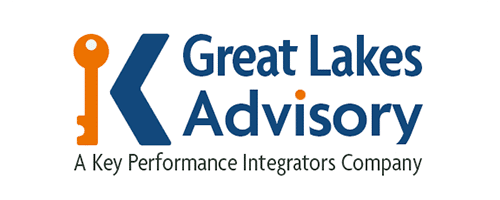With the increase in work-from-home solutions, managing a remote team is easier than ever. Even new businesses can successfully operate in an online space by using remote management tools and well-documented processes. Using documented standard operating procedures (SOPs) streamlines performance by providing employees with job-relevant information. Self-directed employees are assets in a remote setting.
By implementing a few key strategies, your remote team can thrive in a work-from-home setting. You will likely find that managing a team remotely is easier than managing a traditional in-house team. In fact, remote teams come with a variety of benefits that can outweigh those of a conventional office team.
Benefits of a remote team
Remote team management may seem challenging, but documented processes are the recipe for remote worker success. First, ask yourself, “how many SOPs are there?” Your company likely already has many processes. Creating a centralized hub of information can empower employees and streamline performance. With documented SOPs, your company can enjoy the many benefits that come with managing a team remotely.
Deeper Talent Pool
An exciting benefit of remote teams is your reach as a remote employer. Hiring remote workers allows you to attract a larger pool of applicants. You will not only reach candidates outside your geographic area, but you’ll also attract those who prefer to work from home. A 2021 Harvard study reported that most workers prefer remote team management.
Lower Overhead Expenses and Increased Profitability
Decreased overhead expenses are one of the most apparent benefits of having a remote team. Employees who work from home control their environments. You won’t need to pay for office space, A/C, heating, electricity, or other office amenities. Instead, you can redistribute the money you’d spend on utilities and rent.
Better Flexibility and Work-life Balance for Employees
It’s no surprise that a healthy work-life balance benefits employees. However, you may be surprised by how well that balance can work for you. Because remote workers lack a commute, they have more free time. The flexibility of working from home grants a certain kind of freedom and comfort that a traditional office setting cannot provide.
Fewer Interruptions & Increased Productivity
Remote teams enjoy fewer interruptions and distractions. Remote employees can control their environments. So, they can create a working area that considers their unique working style. Traditional office settings can be incredibly distracting to even the most dedicated employee. Fewer distractions result in increased productivity which is better for your bottom line.
Less Wasted Time, Stress & Money Wasted on Commuting
Because remote employees typically work from home, their commute is dramatically different. For an office employee, a long commute can result in stress, increased gas costs, and lateness. A less stressful routine will improve employee morale and comfort. Contented employees have increased productivity and timeliness.

Best work-from-home tools
With the increase of remote teams, there are more resources than ever. Remote team management can be a breeze with some of these effective work-from-home tools.
Project management systems
Project management systems are an organizational tool that allows you to track and manage your projects. PMS software will connect all employees to relevant task-related information. Popular PMS software providers include Asana, Teamwork, and Wrike.
Accountability Measures
An informed employee is an empowered one. You can promote remote worker accountability by setting expectations and monitoring performance metrics. Employees who understand their responsibilities feel more accountable for maintaining your standard of excellence. You can measure their accountability by setting personal or team-wide performance goals.
Managing remotely
Remotely managing a team may look different depending on your industry. However, routine performance measuring and employee check-ins benefit all remote teams. You can keep your employees on track by adhering to practices similar to those you would use in person.
Remote team building games
Remote team building can be just as rewarding as face-to-face activities. In fact, effective team-building strategies can boost the performance of remote workers. There are several games and exercises that can encourage team camaraderie and increase employee satisfaction.
Spyfall is an interactive game meant for web-based calls. In this game, participants are either detectives or a spy. This conversation-based game is the perfect opener to get creative juices flowing.
Scattergories is a classic game that encourages quick thinking. You can customize your games with work-related or interest-based categories.
Skribbl.io is similar to Pictionary. It’s creative, quick, and lets your artistic employees show their stuff.
By blending Two Truths and a Lie with Show and Tell, your employees can learn about each other while having fun. Games like these allow employees to connect regardless of distance.

What do clear processes have to do with successful remote team management?
Your business may have many types of standard operating procedures. Documenting your processes establishes a fixed point for employee information. You can enlist a consulting group to help you develop, compile, and map your SOPs. With process documentation by Great Lakes Advisory, you can keep everyone in the loop while saving valuable time.
Employees know what is expected of them
A confident employee is a productive one. Uncertainty in expectations can lead to confusion and lower-quality work. You can set expectations and goals with training and documented SOPs. With documented SOPs, your employees can self-monitor to ensure they adhere to company policy and push department-wide initiatives. They can reference expectations as needed without additional managerial support, thus saving time for everyone.
Ensure employees know what they need to do
While knowing expectations is a key to job confidence, understanding what to do is just as important. Employee know-how begins with top-notch training and continues with documented processes. When you record your organization’s processes, you establish how your business should run. Employees who may be unsure what actions to take can quickly consult your documented processes and get back on track. Think of documented processes as a self-help guide.
Have a hub for information for tasks
Waiting for an answer can derail an entire workday. It stalls progress and leads to frustration. A centralized hub where employees can regularly access information eliminates the wait. It allows staff to quickly find answers to their question without contacting a supervisor. Documented processes promote resourcefulness and save your company time.
Improved Communication
Employee communication is vital to completing a project. Ambiguous information or underprepared staff can cause production delays. Documented SOPs get everyone on the same page. When the entire remote team is informed, anyone can reference essential information without taking additional time to introduce it.
In addition to saving time, improved communication results in clearer expectations and directions. An employee who understands their goals is more likely to reach them.
Enhanced Accountability
A centralized hub of information encourages employees to be self-sufficient. Well-documented processes are like playbooks for staff. An employee with a good playbook will want to consult it before involving a supervisor. They will feel comfortable working independently with the knowledge that they can easily access job-relevant information. Documented SOPs promote increased accountability and ownership of practices.
Provides Consistency
Properly documented standard operating procedures leave no room for interpretation. If every employee can access the exact same information, they will have a unified understanding. Training sessions led by people can be subject to error. Even a well-meaning supervisor can forget critical information or downplay the significance of a practice. Standardized process documentation provides a consistent understanding of the best practices.
Maintains Organizational Knowledge
The best employees will still need to refresh their memory periodically. Documented processes provide continuous access to every practice in detail. So, your remote team can refamiliarize themselves with anything at any time. They can avoid repeated training and emails to their supervisors. Additionally, employees with gaps in knowledge can take it upon themselves to brush up on relevant information.
Provides a Guiding Hand
Documented procedures and process maps are valuable guides for new and long-time employees. Remote workers can utilize your documentation like a playbook as they navigate their daily tasks. Moreover, employees taking on new responsibilities will always have guidance in the form of clear directions and expectations. Documented SOPs can help you remotely manage a team even while you’re in a meeting.
Onboarding and Training
A centralized location for your processes, policies, and procedures helps streamline training. It provides an outline for creating engaging yet simple training manuals. You can devise a practical road map based on the tasks your employee will perform. In considering what they’ll be doing, you can better instruct them on how to do it.
Bottom Line
Successful remote team management is within your grasp. Your business can thrive in a remote setting with the right tools and documented practices, procedures, and processes. By giving your remote teams access to a centralized information hub, you can skip the micromanaging and start empowering.
If you’re ready to enhance your remote working solution, contact us at Great Lakes Advisory. We want to be your ally in SOP development, process mapping, and streamlined training. Let us help you master remote team management.
